This document discusses various comprehension strategies and instructional strategies to support students' reading comprehension. It describes strategies like graphic organizers, fix-up strategies, and elaborate interrogation that students can use to understand texts. Instructional strategies discussed for teachers include think-pair-share, START, and scaffolding approaches. The document also distinguishes between comprehension strategies, which are tools for students, and instructional strategies, which teachers use to support comprehension.

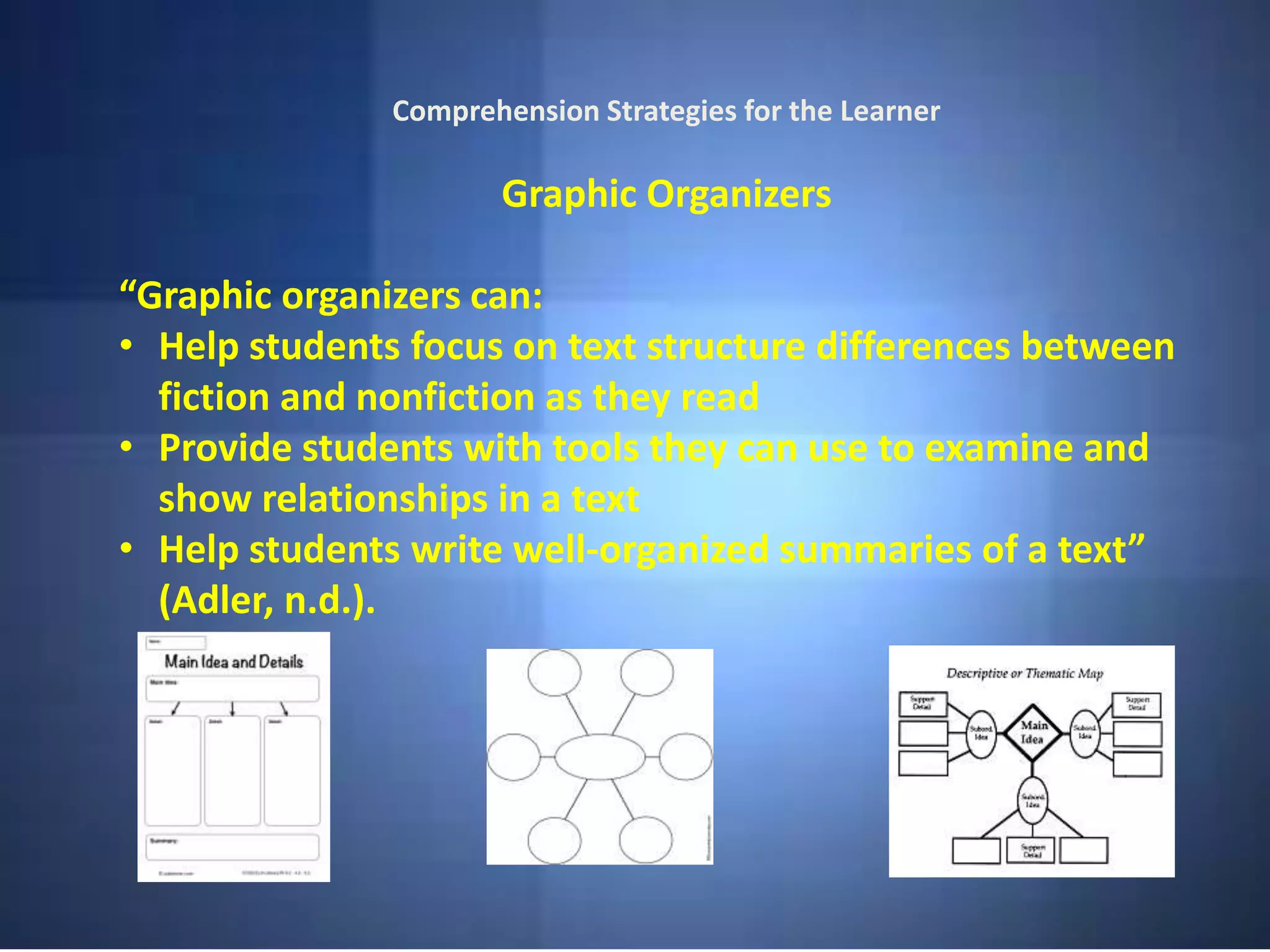
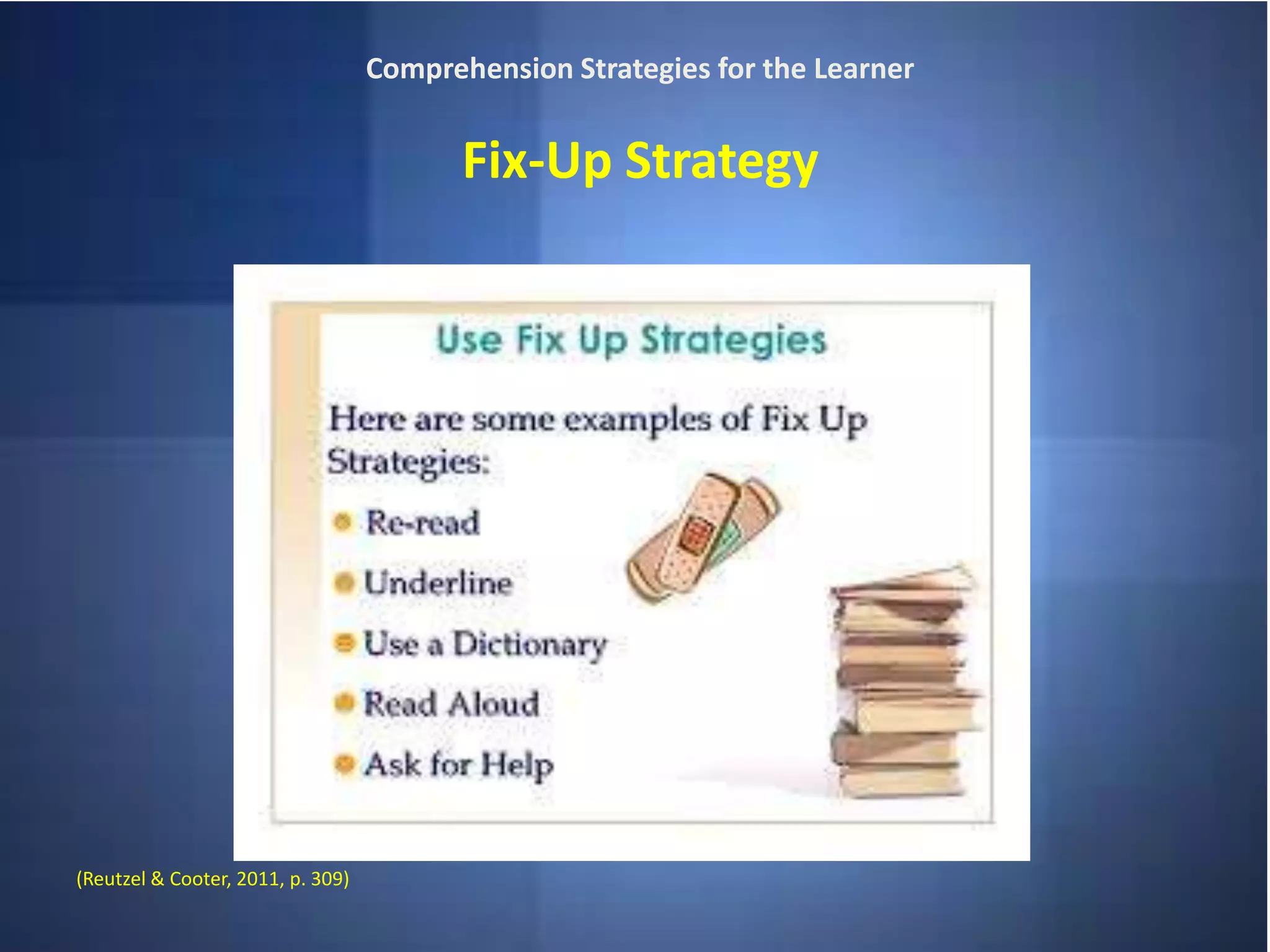
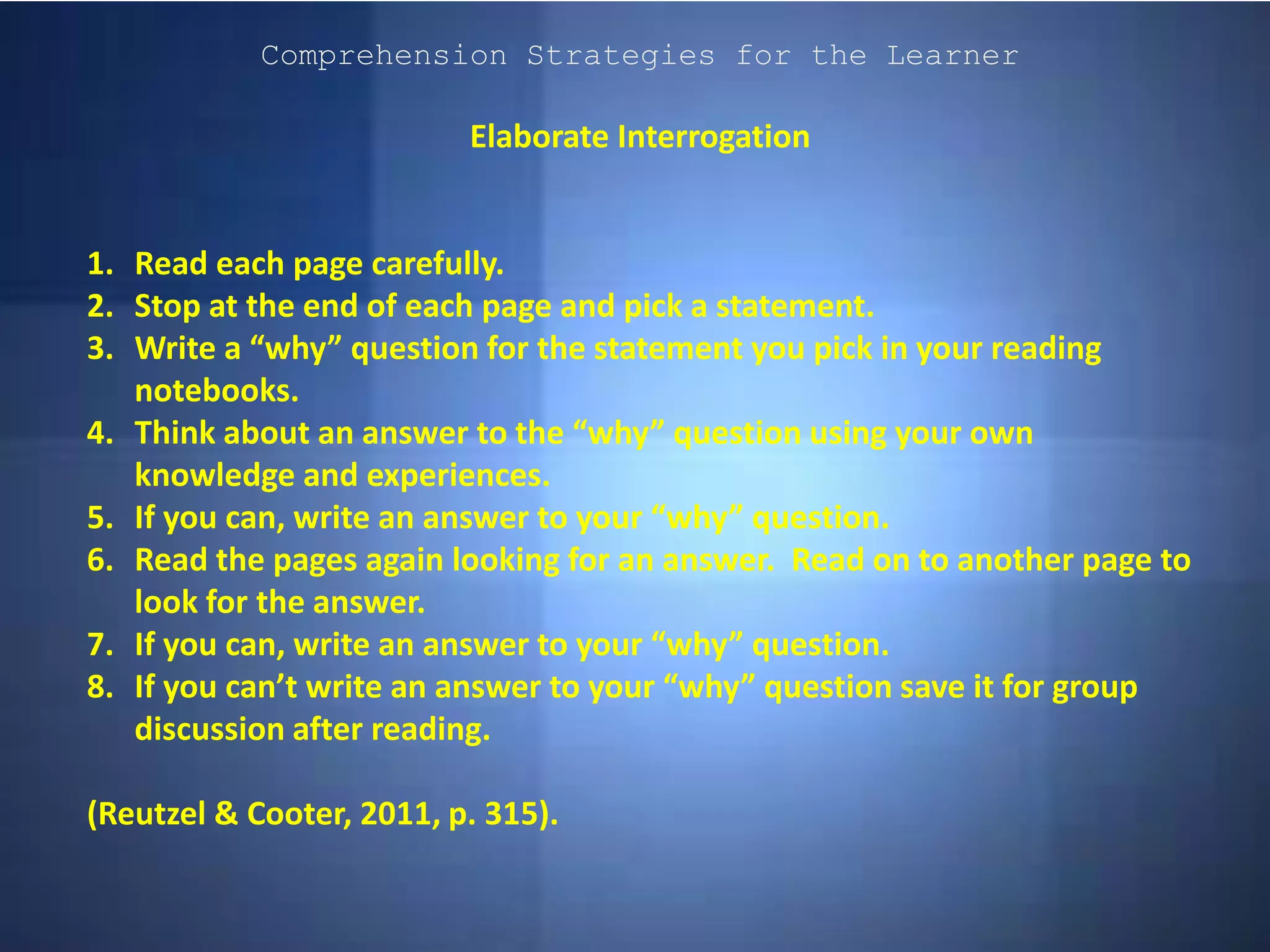
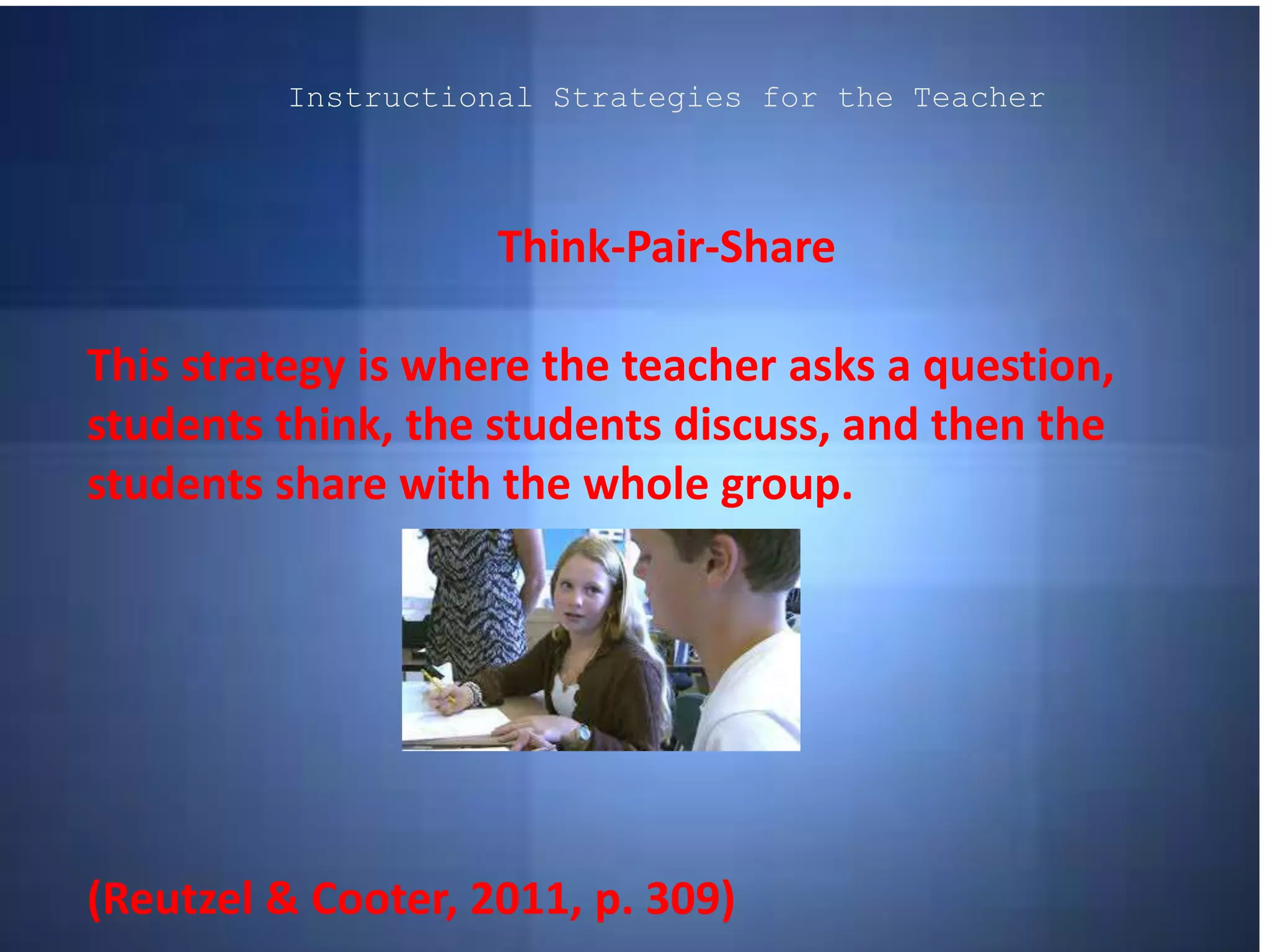


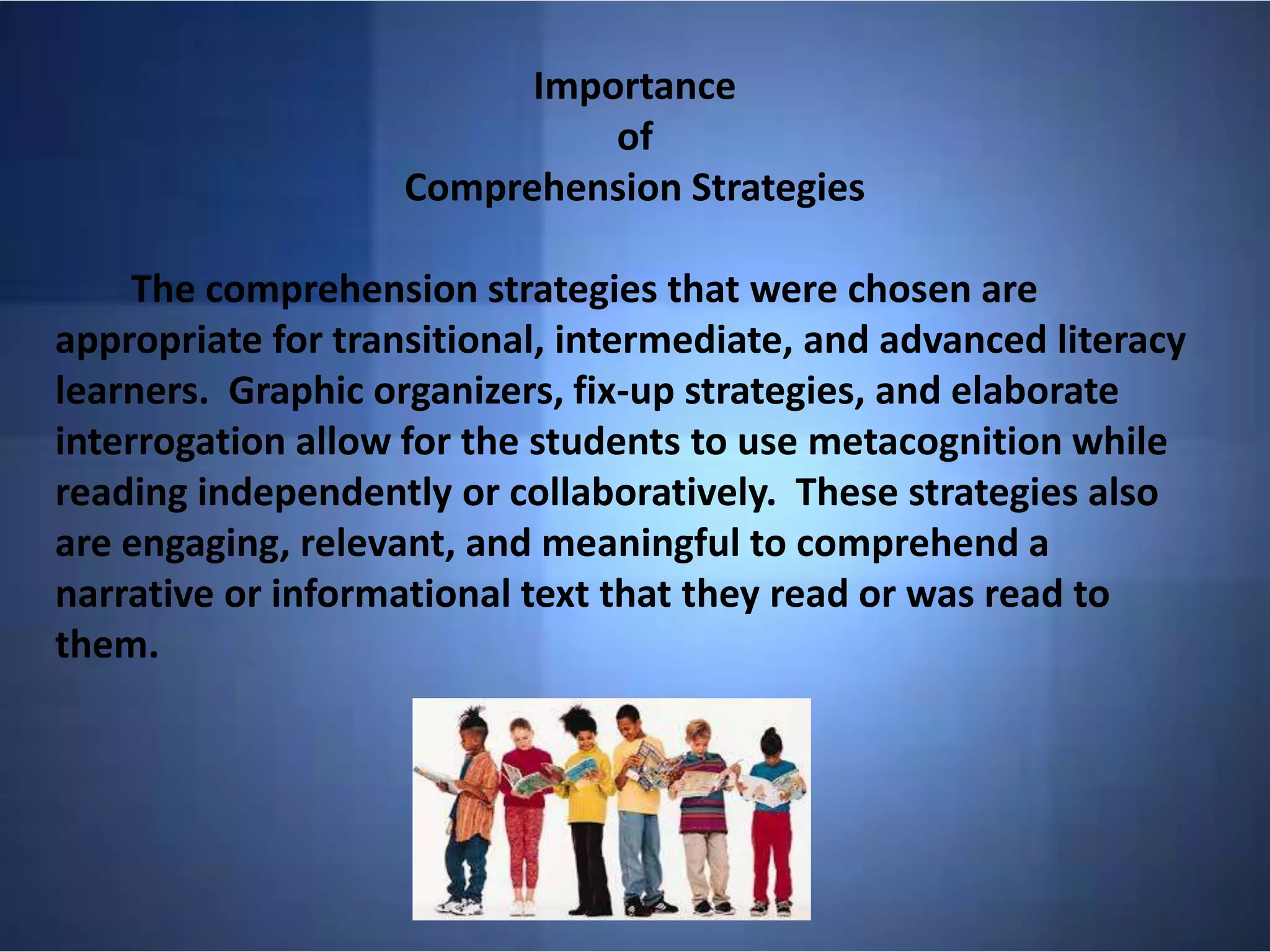
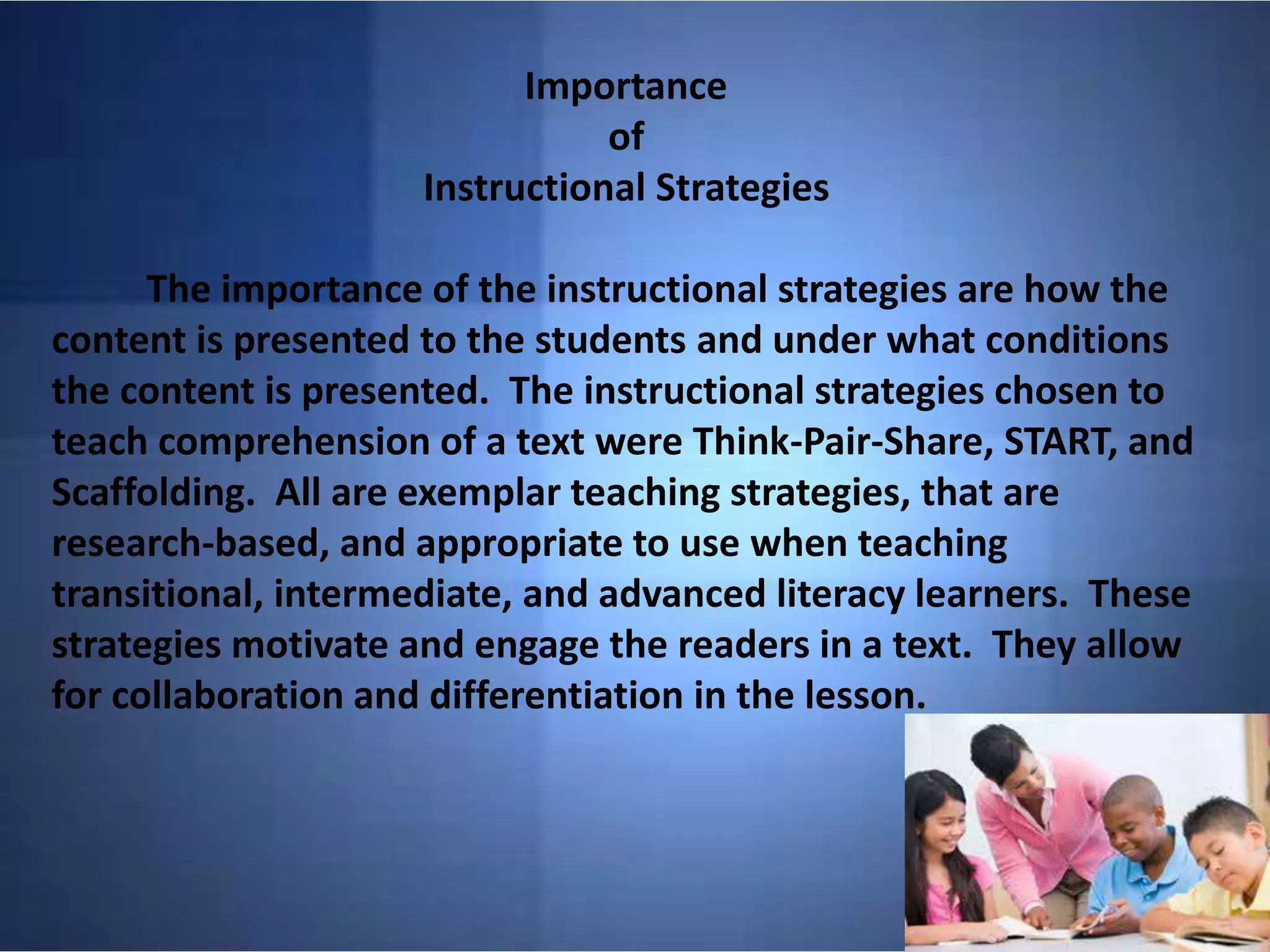
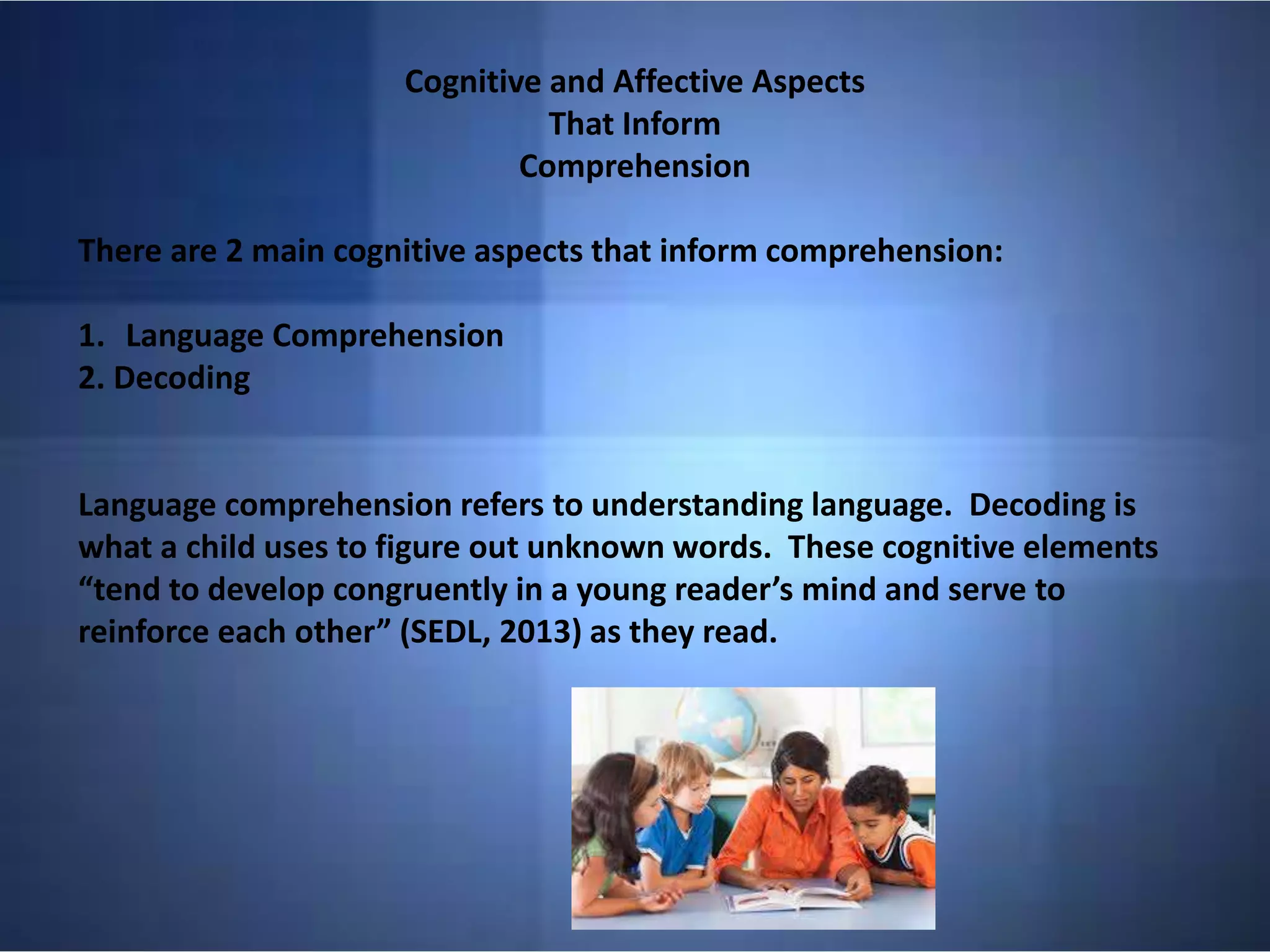
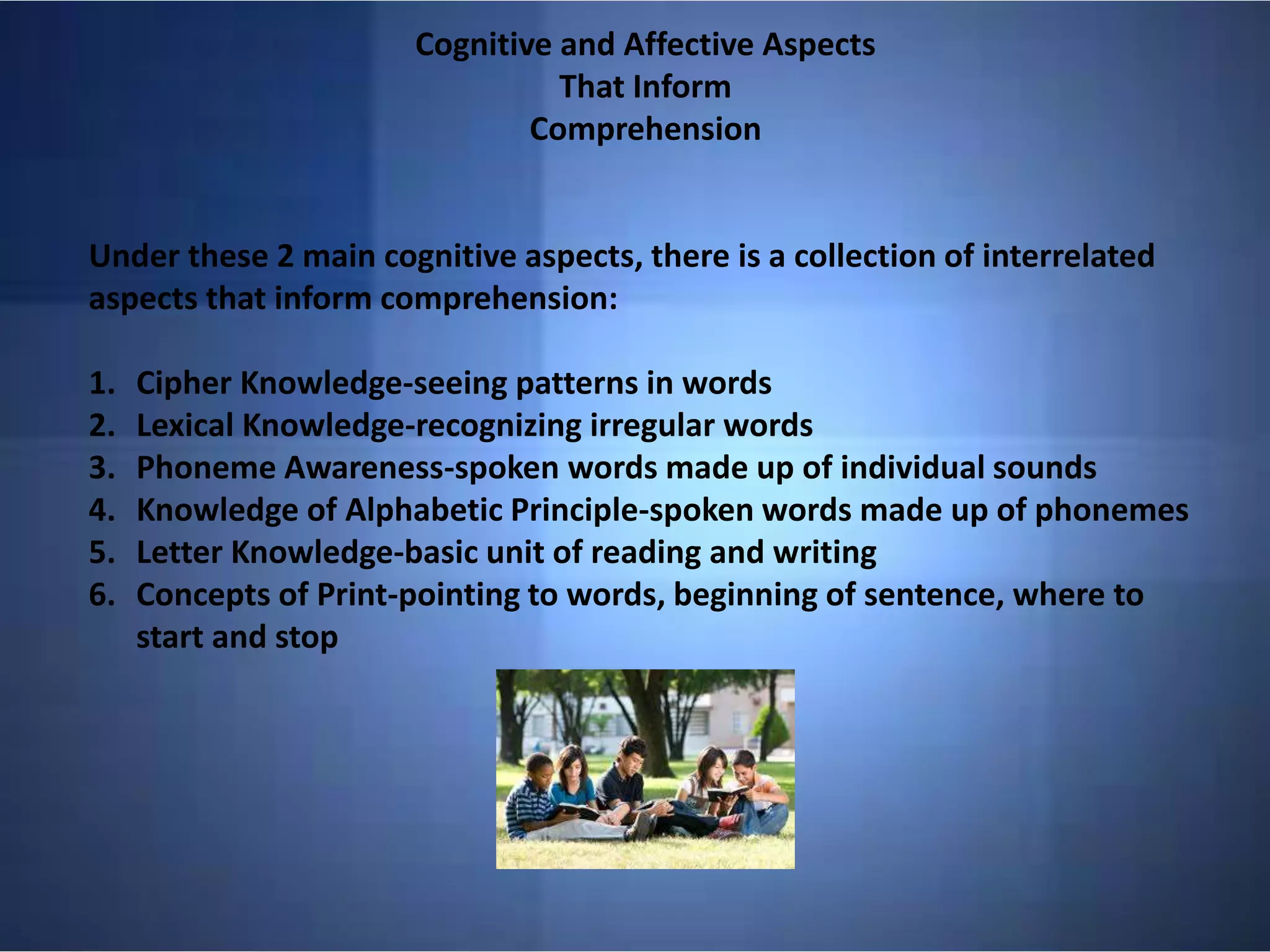
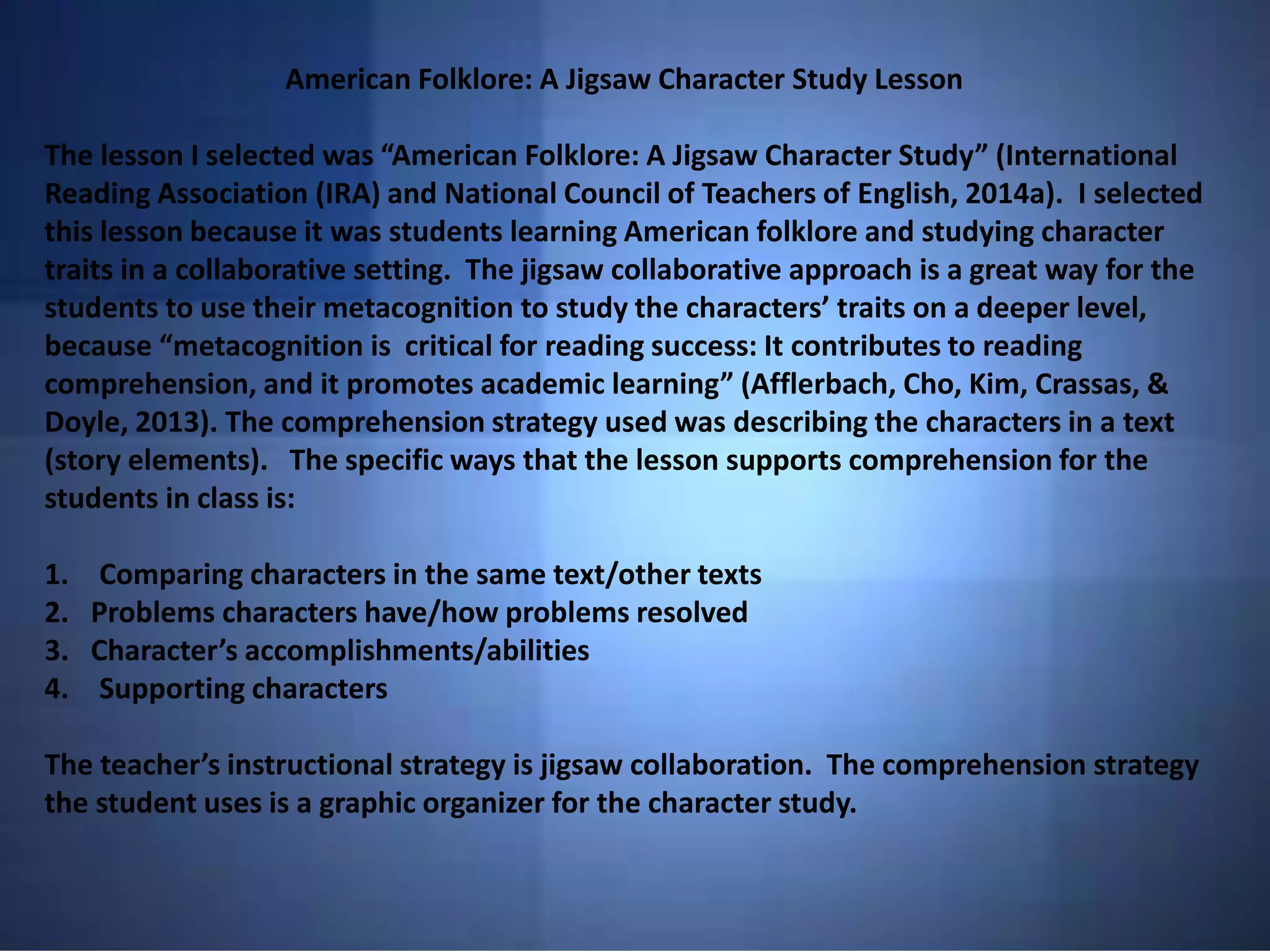
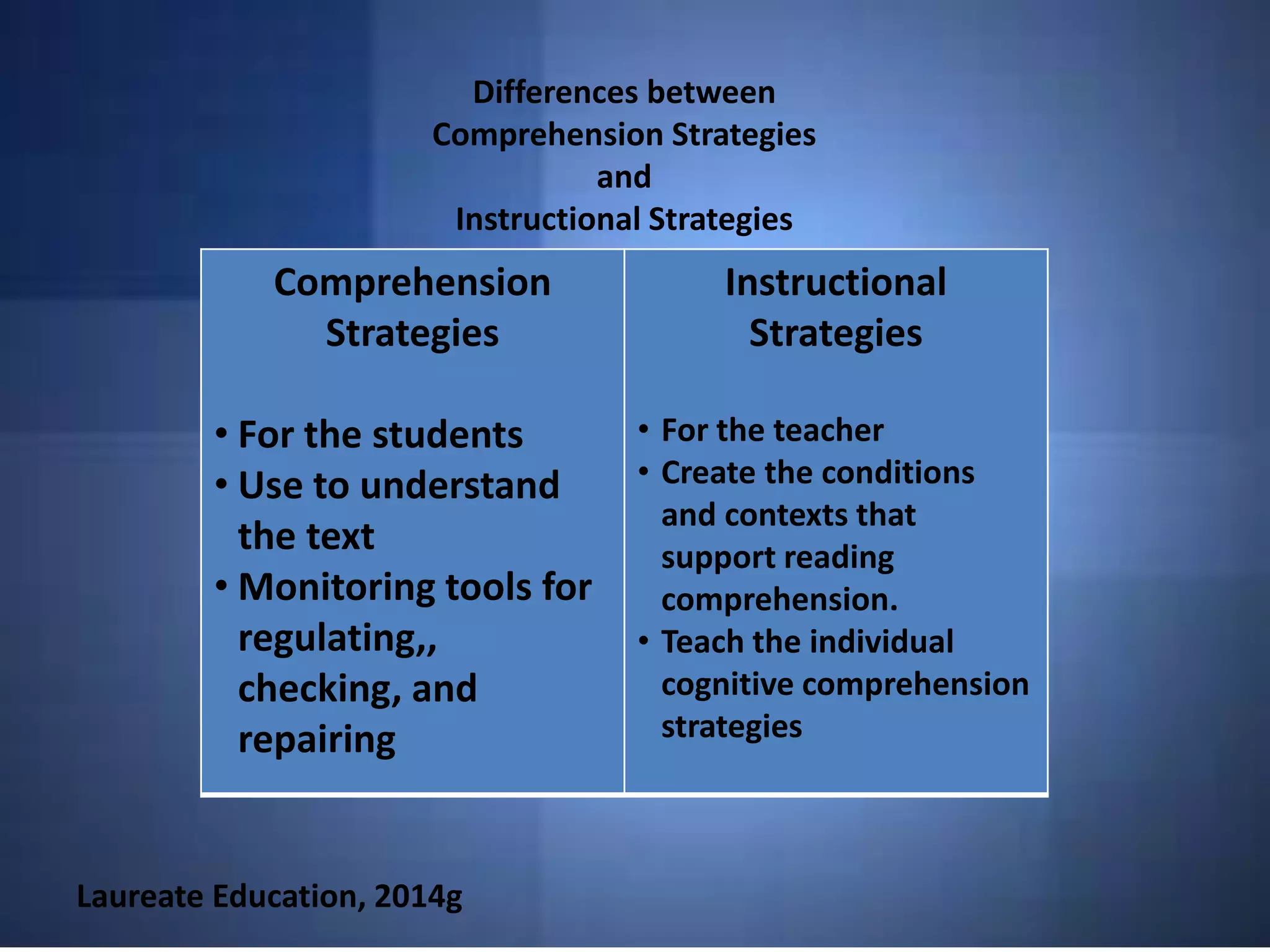
![References:
Adler, C. (n.d.). Seven Strategies to Teach Students Text Comprehension.
Retrieved from http://www.readingrockets.org/article/seven-
strategies-teach-students-text-comprehension
Afflerbach, P., Cho, B.-Y., Kim, J.-Y., Crassas, M. E., & Doyle, B. (2013).
Reading: What else matters besides strategies and skills? The Reading
Teacher, 66(6), 440–448.
Retrieved from the Walden Library databases.
International Reading Association (IRA) and National Council of
Teachers of English. (2014a). ReadWriteThink. Retrieved from
http://www.readwritethink.org/search/?grade=13&resource_type=6&learning_objective=8
Laureate Education (Producer). (2014g). Conversations with Ray Reutzel:
Supporting comprehension [Audio file]. Baltimore, MD: Author.
Reutzel, D. R., & Cooter, R. B., Jr. (2011). Strategies for reading
assessment and instruction: Helping every child succeed (4th ed.).
Boston, MA: Pearson.
SEDL. (2013). Cognitive elements of reading. Retrieved from
http://www.sedl.org/reading/framework/elements.html](https://image.slidesharecdn.com/comprehensionstrategiesandinstructionalstrategies-150320133154-conversion-gate01/75/Comprehension-strategies-and-instructional-strategies-14-2048.jpg)